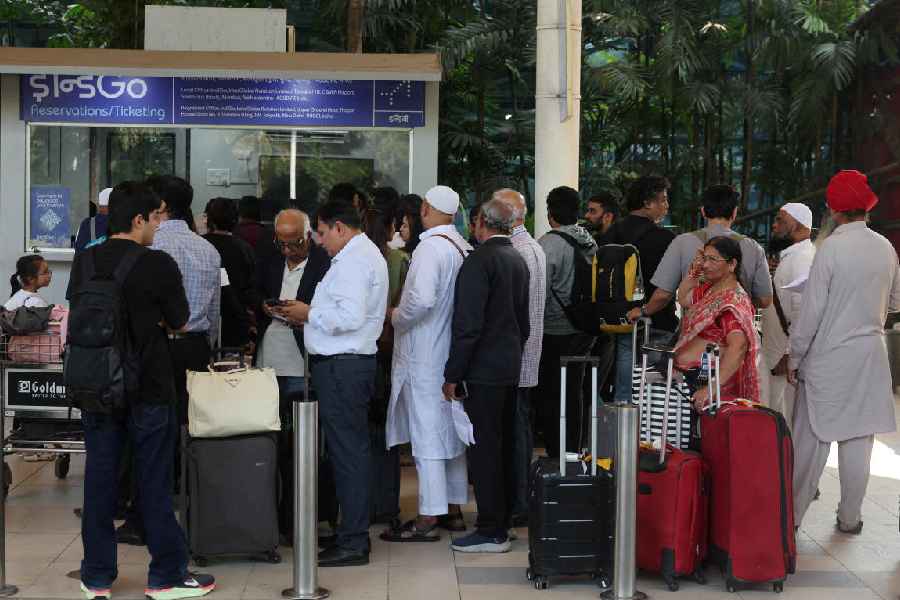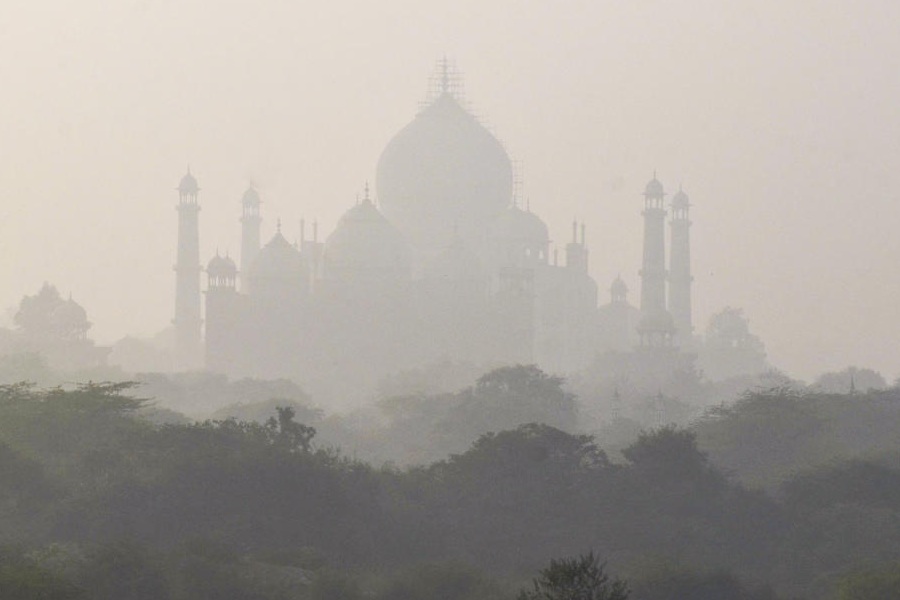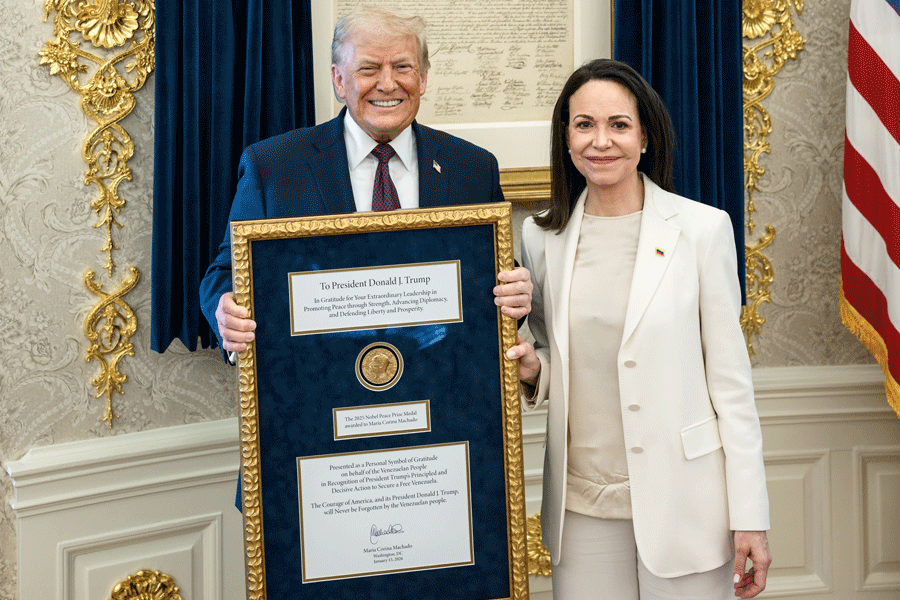 |
| The Geological Survey of India building: High on history. Picture by Pabitra Das |
The Bengal United Service Club was founded in 1845 as The Bengal Military Club. Membership was restricted to “Commissioned Officers, Military and Naval Chaplains, members of the ICS and Barrister Judges of the High Court as may have received permanent appointments from the Home Government”.
I am not aware when the name was changed to the Bengal United Service Club, but it may have been 1855, because I remember a centenary dinner in, I think, 1955, at which the Clutterbucks, who were on a visit from Delhi, were guests of honour. It cannot have been the centenary of the founding of the club or of the building, and thus I feel confident that it was the centenary of the club under its present name.
I do not know the original location of the club, but an early address was 30 and 31, Chowringhee, which, since the Bengal Club was at 33 and 34, Chowringhee, must also have been south of Park Street. The club must have prospered in its early days for it to have been able to afford to erect a purpose-built clubhouse instead of enlarging a former “Nabob’s house”. The design for the building was innovative in that it sought to catch any breeze that there might be and distribute this throughout the building. The design was in the shape of a Maltese Cross. On the ground floor, the four arms of the Cross housed the billiards room, the administrative offices, the library, and chambers for the accommodation of temporary visitors. The octagonal space, from which the arms of the Cross radiated, was used as the members’ bar. On the first floor, the arms of the Cross were occupied by the dining room, the kitchen, the card-room and the reading room. The space above the octagonal bar was open to the roof and provided an entrance lobby at the top of the main staircase to the public rooms.
Although originally founded for ICS men and military officers, it later became necessary to include other services such as the Indian Police, the Forest Service, the Bengal Pilot Service and others. I do not know quite how far this went — possibly it included anybody who could not be described as a “box-wallah!”
During World War II, temporary membership of clubs all over India was offered to commissioned officers. For example, during my five years in the Indian army, I was able to make use of the Bangalore United Services Club, the Royal Bombay Yacht Club, the Sirhind Club Ambala, the Jhansi Club, the Saugor Club, the Abbotobad Club, the Murree Club, the Srinagar Club, the Shillong Club, the Madras Club and the Narbadda Club Jabalpore. However, any such facility must have been a closely-guarded secret known only to those stationed in Calcutta and Barrackpore.
Anyway, I did not learn of the existence of the US Club, as it was commonly known, until 1949 when, after a year spent up-country, I was due to return to Calcutta and needed somewhere to live. Someone suggested that, as an ex-officer, I would be eligible to join the US Club.
At that time, the membership was still mainly made up of members of the ICS and other services. However, the majority of these had retired to the UK since Independence. They had nevertheless retained their membership on the off chance that they might return to Calcutta, or, more likely, in the hope that the club would have to be wound up and they would receive a pay-out. There were, however, still a few of the old members living in the club — a high court judge, the head of the Geological Survey of India (GSI), the wartime tea controller, four senior Hooghly pilots, and so on. Among the non-resident members were former members of the ICS who had stayed on under short-term contracts in the Pakistan Administrative Service in East Bengal and used the club when in Calcutta.
Thus the service qualification remained intact and, whilst it was not originally intended that this should include ex-officers, it was convenient to overlook this and the greater part of the resident members were now people like myself — mercantile assistants who had been wartime officers. Many of us had been in the Indian army, and living in the club was very like living in an Indian army mess. With this influx of new members, the club was full to bursting point, and for my first two months I had to live in one of a row of hutches on the roof built during the war.
Before very long, however, the supply of new mercantile assistants who were ex-officers began to dry up. It, therefore, became necessary to look elsewhere for new members. The first thought was to offer membership to officers in the Merchant Navy. This did not go down well with the Hooghly Pilots, and a compromise was made whereby ship captains were offered temporary membership whilst their ships were in port. Temporary membership was also offered to officers in the British Gurkhas stationed in Barrackpore or up-country. None of this increased the numbers sufficiently, and the service qualification ceased to be insisted on.
Hitherto, there had been no Indian members, although, unlike some clubs, there was no bar to Indian guests of members being entertained. In fact there was one Indian resident in the person of a lady from a very distinguished Bengali family, who was the wife of a former ICS man.
I doubt if ladies were admitted to the club building in the earlier years and the only concession to them was a single-storey building in the club compound known as the Lawn House, which was used for dinners or dances at which ladies could be present. There were, however, no lady members in their own right at any time during the history of the club. Wives lived in the club or otherwise made use of it in their husbands’ names and, in order to make things more comfortable for them, an effort was made to improve the public rooms and the quarters. The larger card-room was re-decorated in what was considered a more feminine style. This was not an unqualified success, as was shown when someone said to Sir Percival Griffiths, “What do you think of it, PJ?” to which the great man replied, “Bloody awful. It is like a brothel without the bandobast.”
It was all to little avail, and negotiations with the new club were entered into. The plan was that the new club should sell its building and bring its money and its members to the US Club. Both committees were in favour, as were the members of the US Club. Not surprisingly, the members of the new club were not in favour. They preferred to sell their building, take their share of the money and then consider joining the US Club.
This was the last chance of saving the club and, when it failed, the only thing to do was to go into liquidation. The committee made enquiries concerning the possibility of selling the building, but the advice was that, although the site on Chowringhee was a valuable one, it was an encumbered site and anyone buying it would first have to knock down the building before they could develop it.
By a stroke of fortune, the next-door GSI had been urging the government to requisition the building. Whilst the club still had some hope of carrying on, this proposal was stoutly resisted. However, the writing was on the wall and, as the price the government was prepared to pay was very fair, resistance to the requisition was withdrawn. In the end the sale had to be rushed through before the end of the year, otherwise the purchase money would have ceased to be available.
It was sad to see the end of so old an institution. On the other hand, the building was preserved and could be used for a purpose for which it was extremely suitable, both from the standpoint of location and design — members got a reasonable share of the proceeds, and the only real sufferers were those who had to find somewhere else to live.











